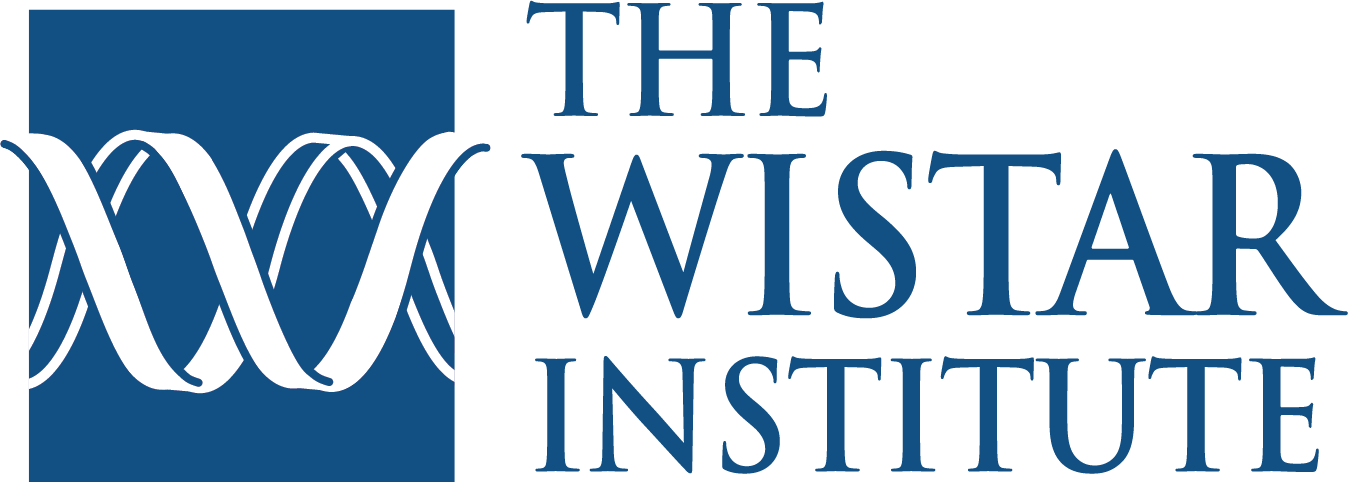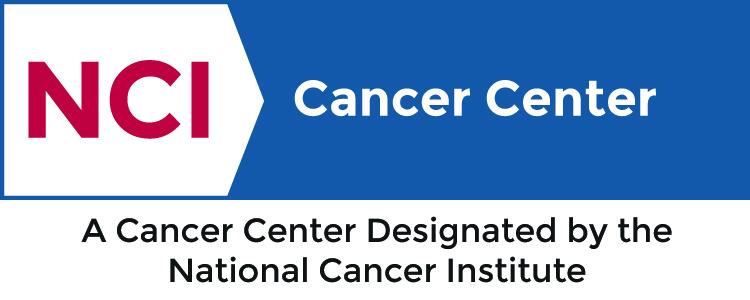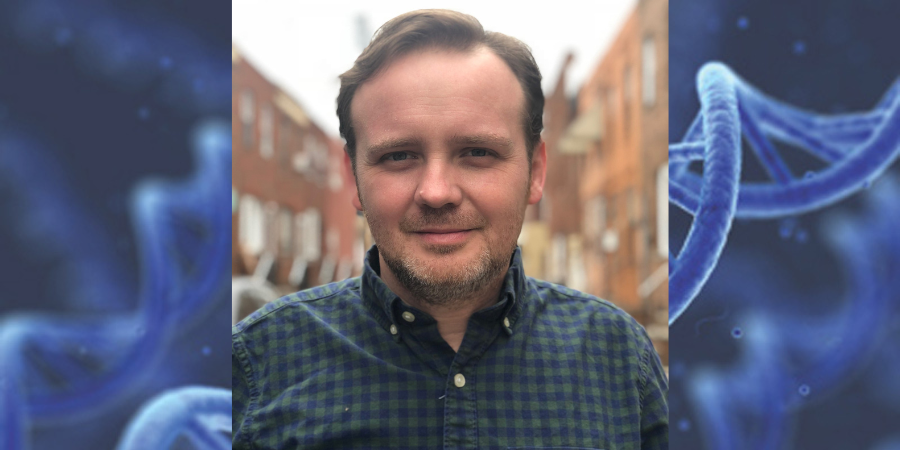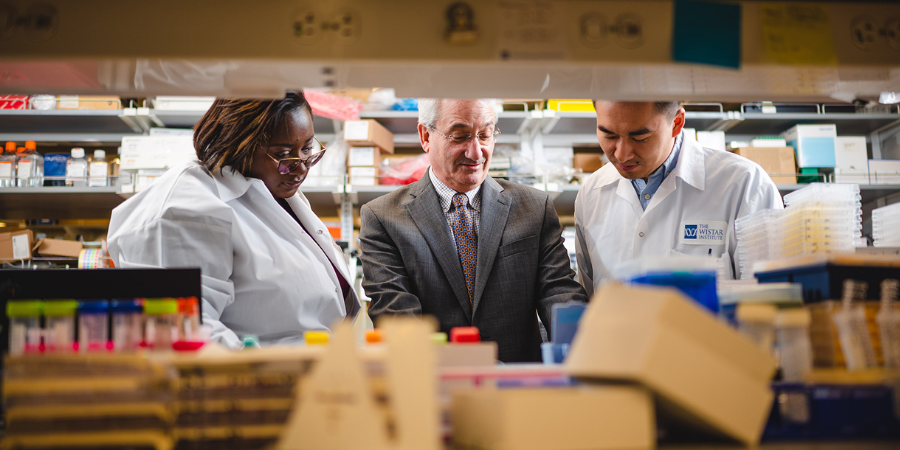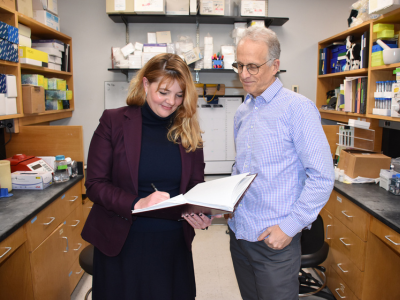The West Philadelphia Skills Initiative, The Wistar Institute, PIDC, The Chamber of Commerce for Greater Philadelphia, Iovance Biotherapeutics, and Integral Molecular Began Joint Recruitment May 21
Organizations in Greater Philadelphia’s life sciences ecosystem are collaborating again to connect more Philadelphians with meaningful career opportunities in one of the region’s fastest-growing industries through a new recruitment for a biotech training program.
This collaborative recruitment for the “Biomedical Technician Training (BTT) Program,” a first of its kind in the region, aims to connect Philadelphians from underserved communities who hold a high school diploma or equivalent to employment with local life science companies.
Recruitment for the Program began May 21 and goes through June 4. The application and additional program information can be found on The Navy Yard website at navyyard.org/skills.
For the first time in this award-winning program, two life science companies, Iovance Biotherapeutics (located at the Navy Yard) and Integral Molecular (located in University City), will be participating in the same recruitment. Upon successful completion of the training program, applicants will have an opportunity to interview for open positions with Iovance Biotherapeutics or Integral Molecular with roles starting at $21/hour.
“The life science industry is full of potential—for cures, jobs, economic growth, and hope,” shared Cait Garozzo, Executive Director of the West Philadelphia Skills Initiative. “Collaboration and iteration are crucial to make these possibilities a reality. By incorporating a second employer, Integral Molecular, we are able to expand on the history of success that we have seen with Iovance Biotherapeutics and connect even more Philadelphians to life-changing jobs at both life science hubs, the Navy Yard and University City.”
PIDC‘s Navy Yard Skills Initiative, a workforce development training program, created with West Philadelphia Skills Initiative to address the talent needs of the employers located at the Navy Yard, has been crucial in engaging its life science employers to create non-traditional pathways into cell and gene therapy careers, including at Iovance. Currently, the Navy Yard has nearly one million square feet of life sciences lab, production, and office space and 4 million square feet planned.
“This will be the 13th overall Navy Yard Skills Initiative recruitment and fourth life sciences-specific recruitment,” said Kate McNamara, PIDC’s Executive Vice President at the Navy Yard. “Through these partnerships, we have been able to connect nearly 120 Philadelphians to well-paying jobs at Navy Yard companies. As life sciences grows at the Navy Yard and in the city, it is paramount that we continue to make these investments in innovative workforce development programs. Funding secured with the help of Congresswoman Mary Gay Scanlon and a commitment from the Ensemble/Mosaic Navy Yard Building Better Foundation have been integral in growing our workforce development program at the Navy Yard.”
“In this fifth cohort of our BTT Program with the West Philadelphia Skills Initiative, we are excited to train Philadelphia residents for job opportunities with Integral Molecular and Iovance Biotherapeutics – two employers fueling the life science sector here in Philadelphia,” said Dr. Kristy Shuda McGuire, Dean of Biomedical Studies in the Hubert J.P. Schoemaker Education and Training Center at The Wistar Institute. “It’s critical our programs offer the skills our life science employers are looking for, whether that is a cutting-edge university or research institute lab, or a pharmaceutical or biotech company. As strong collaborators, we make sure to keep up with what the industry needs, and we’re excited to be doing this in a city that is a growing hub for the life sciences.”
“We’ve valued a longstanding partnership with Wistar’s BTT Program and have consistently admired their dedication to training students to have the necessary skills for success in biotech,” said Dr. Benjamin Doranz, CEO, Integral Molecular. “At Integral Molecular, we are expanding and transitioning to a production phase for many of our offerings. We look forward to a close collaboration with the BTT Program to recruit members of the Philadelphia community for vital roles in our laboratories.”
“Iovance is honored to host our third cohort of the Biomedical Technician Training Program. We look forward to continuing our collaboration with Wistar, the West Philadelphia Skills Initiative, the Chamber of Commerce, and PIDC to build deep, diverse life sciences talent pipelines across Greater Philadelphia and beyond,”said Jamie Crawford, Vice President, Commercial Manufacturing, Iovance Biotherapeutics, Inc.
“The announcement of this newest Biomedical Technician Training Program is excellent evidence of the collaboration that exists in Greater Philadelphia, the strength of the training, interest and involvement of employer partners, and ability to scale the Program to meet the needs of our region’s rapidly growing life science ecosystem,” said Nikki Pumphrey, Vice President, Talent and Workforce, Chamber of Commerce for Greater Philadelphia.
Recruitment & Program Information
- Recruitment Dates: May 21 – June 4
- Applicant Requirements: Applicants must be a Philadelphia resident, 18 years of age or older, hold a high school diploma or GED, test at a 12th grade level in reading, literacy, and math, and provide proof of having full COVID-19 vaccination by June 12
- Where to apply: navyyard.org/skills
The 24-week paid training Program begins with 11 weeks of evening classes at The Wistar Institute focused on preparing participants with a foundation in cellular and molecular biology as applicable to the life science industry. After the first 11 weeks, participants will take part in a full-time, hands-on laboratory orientation at The Wistar Institute before transitioning to externships at the Iovance iCTC (Cell Therapy Center) at the Navy Yard or Integral Molecular in University City.
Throughout the 24-week program, the West Philadelphia Skills Initiative will support participants by offering professional development courses and coaching.
Select candidates who complete the program may interview for a full-time position at Iovance Biotherapeutics or Integral Molecular.
About the West Philadelphia Skills Initiative
The West Philadelphia Skills Initiative (WPSI) is one of the nation’s most successful workforce development organizations. For over 10 years, WPSI has solidified its role as one of the highest-performing workforce intermediaries in the country by building customized talent solutions that bridge the divide between unemployed Philadelphians seeking opportunity and employers seeking talent. WPSI focuses on professional development and career coaching for adults. www.philadelphiaskills.org
About The Wistar Institute
The Wistar Institute, the first independent, nonprofit biomedical research institute in the United States, marshals the talents of an international team of outstanding scientists through a culture of biomedical collaboration and innovation. Wistar scientists are focused on solving some of the world’s most challenging and important problems in the fields of cancer, infectious disease, and immunology. Wistar has been producing groundbreaking advances in world health for more than a century, consistent with its legacy of leadership in biomedical research and a track record of life-saving contributions in immunology and cell biology. Wistar’s Hubert J. P. Schoemaker Education and Training Center brings together education programs for high school, undergraduate and graduate students as well as postdoctoral fellows, with its expanding pre-apprenticeship and apprenticeship training, including the Fox Biomedical Research Technician (BRT) Apprenticeship. www.wistar.org
Media Contact: Steve Schneible (sschneible@wistar.org)
About PIDC and the Philadelphia Navy Yard
PIDC is Philadelphia’s public-private economic development corporation. Since acquiring the 1,200-acre site from the federal government in 2000, PIDC has been the master developer and site operator of the Navy Yard. PIDC’s mission—to spur investment, support business growth, and facilitate developments that create jobs, revitalize neighborhoods, and drive growth to every corner of Philadelphia—strongly informs its strategy for the Navy Yard, where the focus is on building a cohesive community that fosters employment, innovation, and production. PIDC manages all aspects of the property’s management and development, including master planning, leasing, property management, infrastructure development, utility operation, and structuring development transactions. www.PIDCphila.com | www.navyyard.org
About The Chamber of Commerce for Greater Philadelphia’s CEO Council for Growth
The Chamber of Commerce for Greater Philadelphia’s CEO Council for Growth (CEO Council) leads our region forward by envisioning a stronger, more competitive community, convening decision makers, taking action, and advocating for policies and practices that strengthen our regional economy. The CEO Council advocates through its members and engages stakeholders to enhance economic growth and prosperity in the region. We prioritize the revitalization and enhancement of our region’s talent, mobility, and innovation. The CEO Council’s Cell & Gene Therapy Initiative is leveraging Greater Philadelphia’s specialized assets to accelerate growth and promote the region as the global hub of research, talent, capital, and companies in cell & gene therapy, gene editing, and connected health. www.ceocouncilforgrowth.com
About Iovance Biotherapeutics
Iovance Biotherapeutics, Inc. aims to be the global leader in innovating, developing, and delivering tumor infiltrating lymphocyte (TIL) therapies for patients with cancer. We are pioneering a transformational approach to cure cancer by harnessing the human immune system’s ability to recognize and destroy diverse cancer cells in each patient. The Iovance TIL platform has demonstrated promising clinical data across multiple solid tumors. We are committed to continuous innovation in cell therapy, including gene-edited cell therapy, that may extend and improve life for patients with cancer. www.iovance.com
About Integral Molecular
Integral Molecular is the industry leader in creating and commercializing transformative technologies that advance the discovery of therapeutics against difficult protein targets. With 20+ years of experience focused on membrane proteins, viruses, and antibodies, Integral Molecular’s technologies have been integrated into the drug discovery pipelines of over 600 biotech and pharmaceutical companies to help discover new therapies for cancer, diabetes, autoimmune disorders, and viral threats such as SARS-CoV-2, Ebola, Zika, and dengue viruses. www.integralmolecular.com
For a printer-friendly version of this release, please click here.
